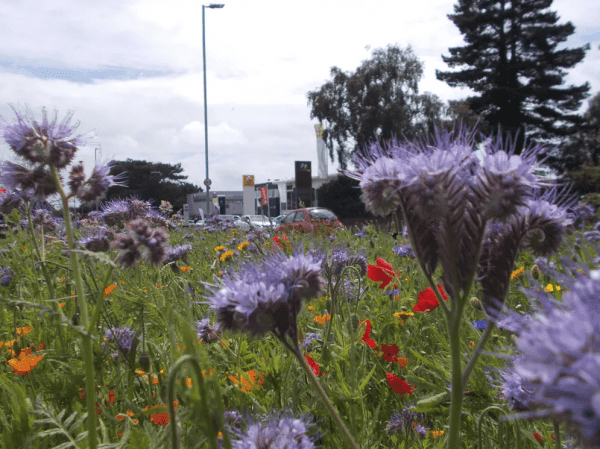As cities get bigger and cover more land, the need to make space for wildlife – including insects – in urban areas has become more pressing. Research has shown that cities may not be such a bad place for pollinating insects such as bumble bees, scolitary bees and hoverflies. In fact, one UK study of ten cities and two large towns found a greater variety of species in urban areas than in rural areas, while another study showed some UK urban areas hosted stronger bumble bee colonies than those in rural areas.
But other research has found that cities only support the most common pollinators, such as the buff-tailed bumble bee (which is a flexible, generalist forager), and that many species decline in number as urbanisation increases.
One way to help pollinators in urban areas is to provide flowers for them to feed on, in an environment which is otherwise empty of flowering plant life. Flowers have been planted on roadsides around the UK for this very purpose.
Planting more flowers is a great idea – but it is difficult to predict which flowers different insects will use the most, and whether enough flowers are being provided for them. This is why, for our recent study, we teamed up with the National Botanic Garden of Wales to find out what some different bee species think of the wildflower strips planted by
Continue reading at University of Guelph.
Image via University of Guelph.


